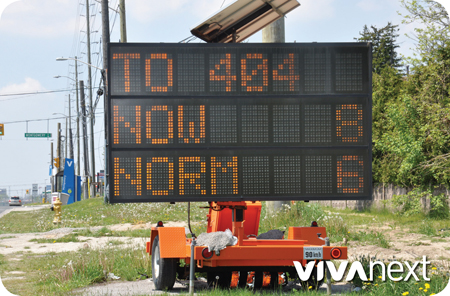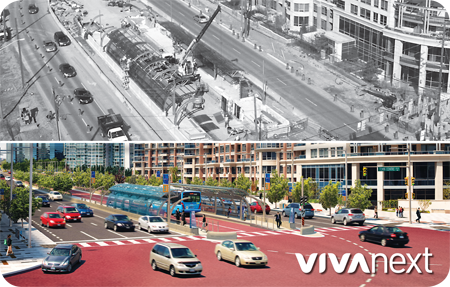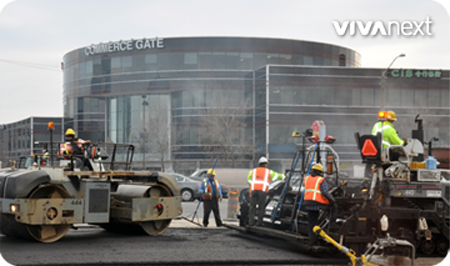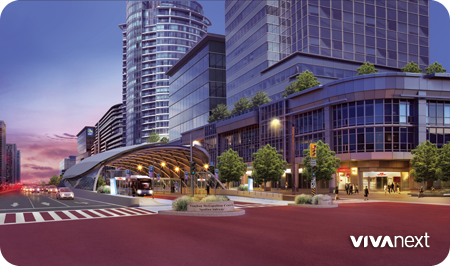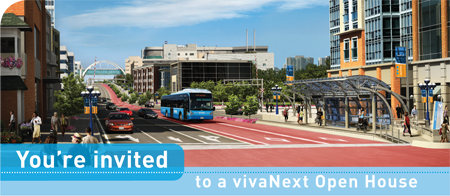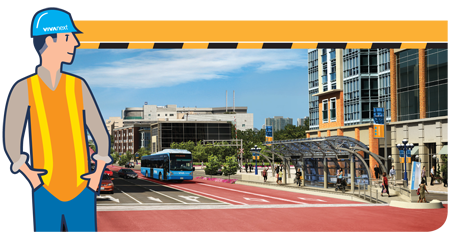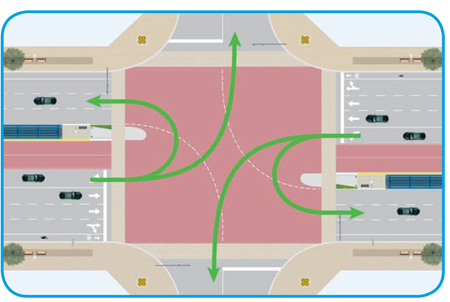We’ve all seen them at one time or another, the big orange and black electronic message boards relaying construction information and how long it will take to travel through a construction zone. You may have asked yourself how these signs provide up-to-date travel time and are they accurate? Perhaps you even timed it to test its accuracy.
These signs are Variable Messaging Signs [VMS]. You may have also heard them referred to as construction message boards. You will see them posted at key locations along the vivaNext rapidway corridors currently under construction. The signs operate from a bank of batteries. Energy from the sun, collected by solar panels on the top of the sign, recharges the batteries allowing the construction information and real-time travel information to stay lit.
The real-time travel information works from innovative Bluetooth technology based sensors to calculate travel times through the construction zone. Once a minute, the current average travel time is posted to the VMS. We were the first in North America to track Bluetooth data and convert it into real-time travel time displays to help commuters decide the best way to minimize their travel time through construction.
So how accurate is the real-time travel data on these signs? We keep a close eye on the travel times displayed on the VMS. We continuously monitor and check the accuracy of these signs to ensure the travel times provided are precisely the time it takes to travel through the construction.
The VMS are just one example of the tools and technology we use to keep you informed of rapidway construction. Check out vivanext.com for the latest news and if you haven’t already, sign up for construction updates.
We thank you for your patience during vivaNext rapidway construction. Once the transformation is complete, the rapidways will help connect communities, save people travel time on viva and transform the physical look and feel of the streets to be beautiful refreshed places to visit, shop or work.

